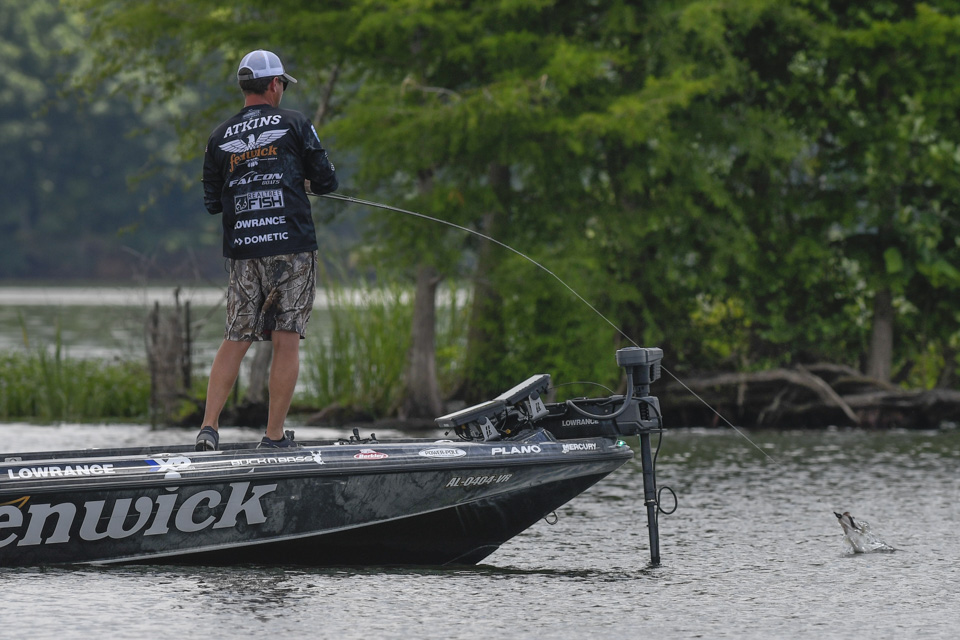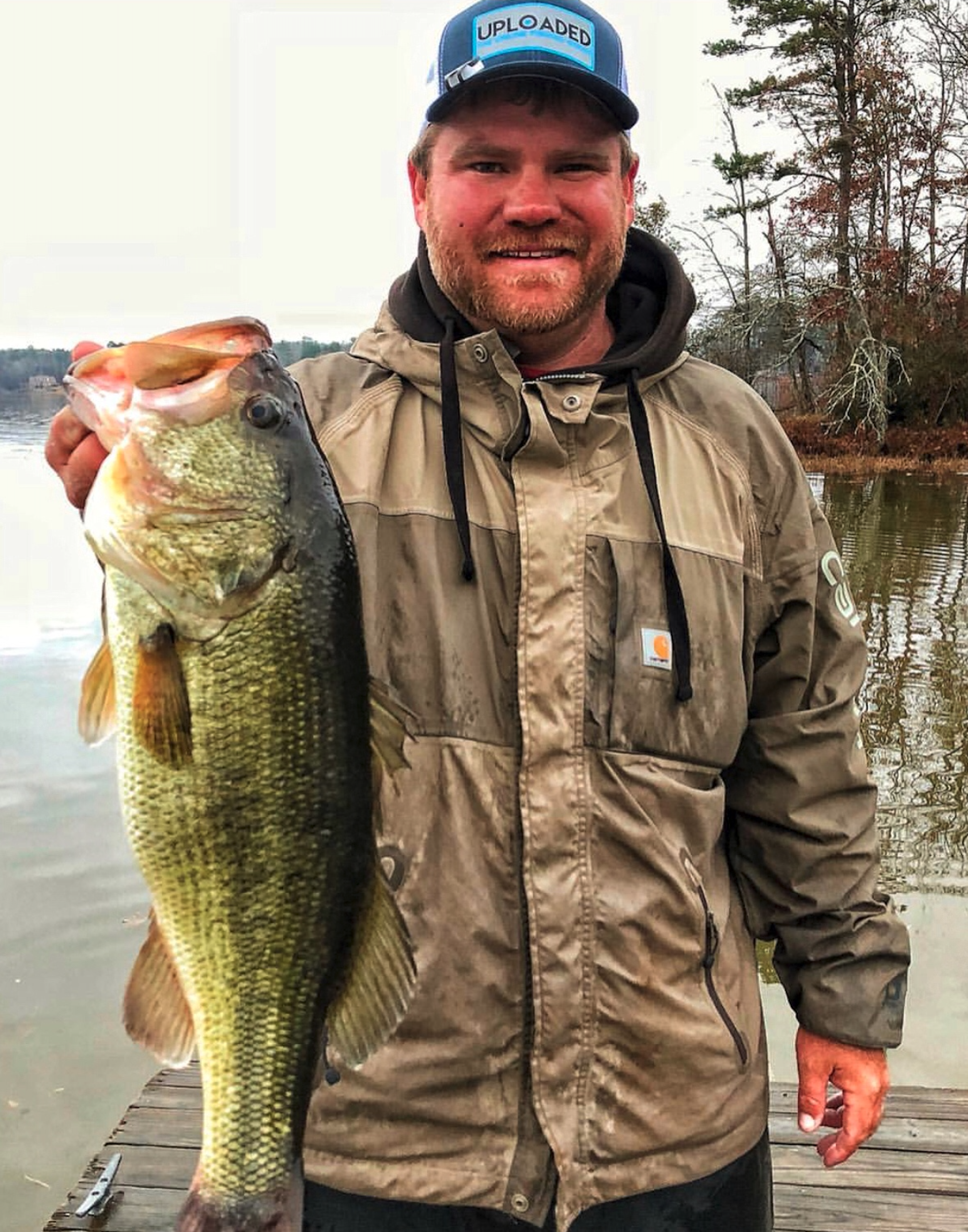
We’re merely hours from the start of the Guaranteed Rate Bassmaster Elite at St. Lawrence River, and the anglers are hustling to make their final preparations. We caught up with Justin Atkins, last year’s runner-up in this event, to see how his practice has gone so far. Though the tournament lands on the same week of the calendar as the 2021 event, the fishing, according to Atkins, has been a little different in practice.
“I feel like it’s fishing different,” said Atkins. “I’ve fished some of the same areas that I fished last year and there are some fish on them, but they’re not as aggressive. They’re not biting quite as easy, and there’s not as many.”
Atkins believes the increase in fishing pressure we’ve seen over the last couple years is taking its toll, even on fisheries as expansive as the St. Lawrence River and Lake Ontario.
“Last year I put in at a ramp down by the lake, and it was me and Palaniuk and one local. And yesterday morning I couldn’t even find anywhere to park there were so many random trucks.”
Though the lake is fishing a little “different,” Atkins admits the fishing is still good. But as for all the talk that’s been floating around of someone eclipsing 100 pounds of smallmouth in four days of competition, Atkins isn’t sold on that quite yet.
“I don’t think it’ll take 100 here, just because the fish are postspawn, and they’re not big yet. When you get to mid-August, those 4 1/2- pounders we’re catching right now turn into 5 plus-pounders.”
With the fish fresh off the bed and not yet full up from a couple months of feeding, it’s reasonable to estimate each quality fish right now weighs at least a half-pound less than it would have a month ago with eggs or in a month with a full belly. A half pound apiece for 20 fish across four days equals 10 pounds of total weight difference.
“I feel like right now, it’s going to take 92-ish. Last year it took 90. We’ll have more fishing time this year, so even if it’s not fishing quite as good, just being able to spend more time out there will allow guys to run into an extra big bite or two.”
Though Atkins is reporting that most of the fish are postspawn, they aren’t all out deep yet. It’s likely that we’ll see fish caught a wide variety of ways this week, in a wide depth range.
“What’s kind of crazy is I’ve caught some big ones in 6 foot, and today I caught some big ones in 30. It seems like different parts of the lake are in different phases right now.”
The “different parts” of the lake that are fishing different stretch on for miles at a time. So Atkins’s game plan has been to find one of these areas that’s a little further away and then get that area dialed in and pick it apart over four days of competition.
“I picked an area that I felt like had quite a few options. I caught some shallow, and I caught some out. I found a mid-depth place that had a lot of fish on it. So I feel like I’ve got a lot of options there.”
The area that Atkins has selected requires a considerably long run before he’ll be able to fish. This was a deliberate move on his part, hoping that the location’s distance from launch will limit the number of his competitors that join him there.
“The key to doing good here is having an area to yourself. When you can find three, four or five groups of fish that have that right caliber in them and you’ve got the area to yourself, you can kind of rotate around and be selective. That’s when I think you can do really well.”
Atkins knows the converse of this strategy is to fish closer to the ramp, where multiple guys will likely find the same fish. Though he believes several big bags will come from areas like this on Day 1, he’s seen these anglers “cannibalize” one another in the past, as their fish are not able to replenish over four days of competition.
So Atkins will make the run. As for the baits he’ll be using to break his area down, simplicity paired with a little flexibility are essential to his plan.
“I keep a drop shot, a Ned rig, a hair jig and a spybait laid out. And I kind of just let the fish tell me what they want. It seems like some want to feed on the bottom, and some want to feed up. So I’ll just rotate through to try to figure out how to get them to bite.”
Strong 20 mile-per-hour winds have been a big factor in practice, which is no surprise as wind typically plays a big part on this expansive fishery. But the future outlook for the tournament is promising. Atkins has been monitoring the forecast with his wind app, and the predictions as of now have the winds around 8 miles per hour on Thursday, the first day of the tournament.
“A couple days we’ll have north winds which really make it pretty easy to get around. The worst is south to southwest because it has the whole lake to build up. I’m going to assume a lot of people are going to fish in the lake. And I’m going to be curious to see who takes advantage of having the whole river to himself.”
With the wind laying down, the assumption is that the temptation to go out onto Lake Ontario will be too great. After all, Ontario is where the historically larger numbers of giant smallmouth live, and the river only typically sees an influx of boats when it’s too windy to venture out onto the big water.
But a recent tournament report may have a few anglers reconsidering this traditional train of thought. Though the Elite Series anglers aren’t allowed to gather any information from private sources, public information is fair game. And word has gotten round that a BFL held last Saturday on the St. Lawrence River saw 28 pounds and 14 ounces take the top spot. The kicker: Lake Ontario was off limits in that event.
“Now, 19 something was 10th, and that won’t be 10th in ours. But the potential is there. I think if a guy got on a pattern in the river he could do well, because he’s going to be able to run it. Last year, there was a boat on every point. This year, he’ll have 50 of them he could run. So I’m not going to say it can’t be won there.”
Like Atkins, we’ll have to wait a couple more days to see how things begin to shake out. Will the long-run lake bite be the ticket? Or will sticking closer to home and taking advantage of the river and more fishing time prove to be enough to win this year? Perhaps a man in the middle can survive four days on some of the more popular honey holes?
Tune in to Bassmaster LIVE beginning Thursday morning at 7 a.m. ET to find out for yourself.





